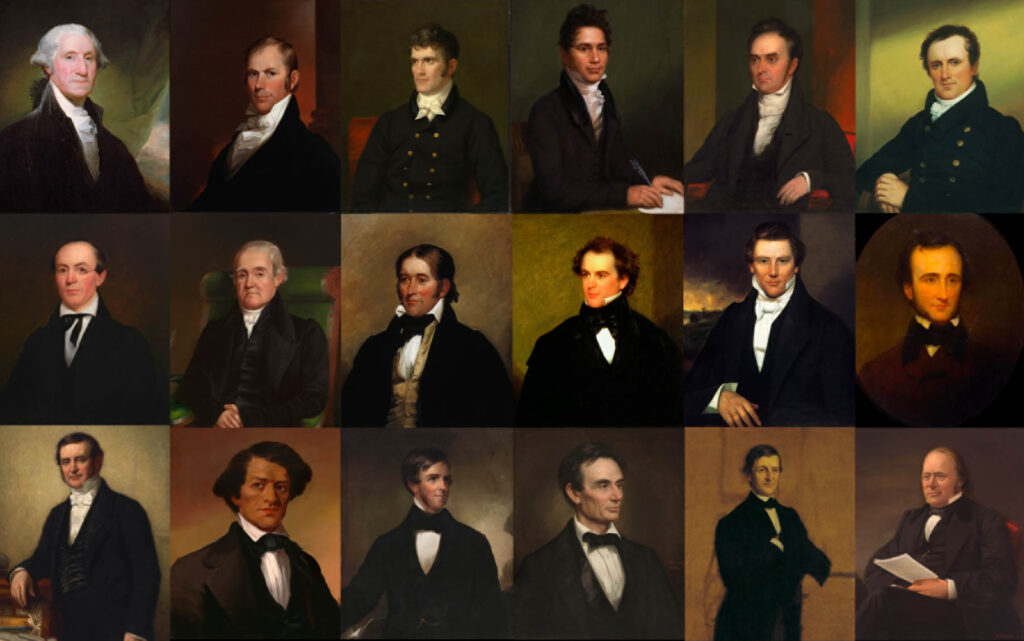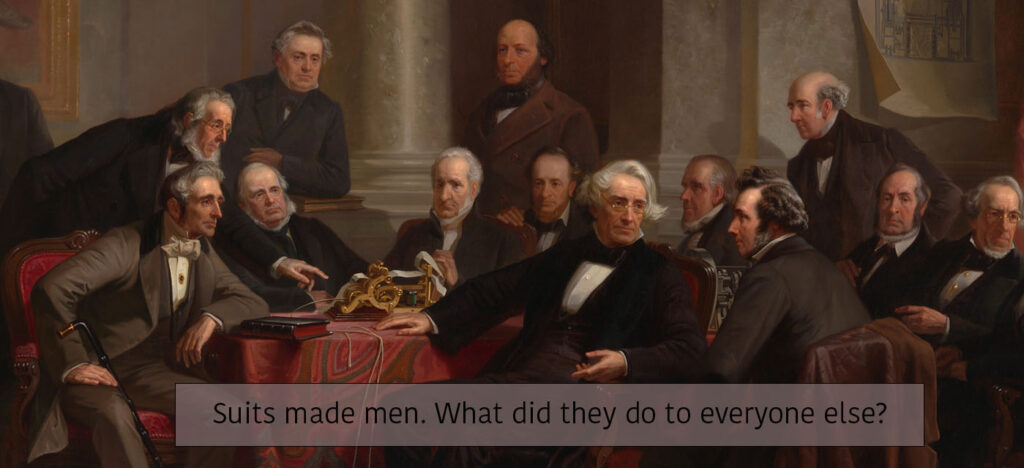SUITS: The Making of Modern Men
For my first book project, my question was: why do men dress alike?
Specifically, I wondered, why is men’s formalwear (tuxedos) such a strict uniform, when for women, the goal is to stand out?
This question led me to the origins of the modern suit, which arose in the first decades of the nineteenth century. When the Founding Fathers started dressing “plainly” as a marker of what they saw as “republican simplicity,” they linked the visual and material language of the suit to both democracy and to masculinity at the same time. When they did this, they created a rift in the way “fashion” worked in the world. “Fashion” (which had been the purview of the upper class of all genders for millennia) was newly constrained to both femininity and frivolity, harnessing the three “f-words” together. This “Great Masculine Renunciation” had two effects: in making fashion women’s business, it yoked women to frivolousness. It also trapped men in a uniform of sartorial restraint.
The modern suit adopted by men in the first decades of the nineteenth century has three main principles: plainness, homogeneity, and stability. Suits are visually plain, they don’t vary much, and they don’t change much over time. Because of this, they resist both collection and analysis. The problem with this resistance to analysis is that the people who adopted suits were white men…..and whiteness and masculinity are other things that have been the “unmarked” categories, which we have had to train ourselves to be able to see. Suits were designed to to be unremarkable, which then hid the power of white men. Contemporary phenomena such as “toxic masculinity” and “heteronormativity” exist, at least in part, because of the invisibility of the suit. We will never be able to see white men (and therefore power) if we cannot see the suit.

Top row: George Washington, Henry Clay, John C. Calhoun, John Ridge, James Fenimore Cooper. Middle Row: William Lloyd Garrison, Noah Webster, David Crockett, Nathaniel Hawthorne, Joseph Smith, Jr., Edgar Allan Poe. Bottom Row: George Peabody, Frederick Douglass, Oliver Wendell Holmes, Abraham Lincoln, Ralph Waldo Emerson, Jean Louis Rodolphe Agassiz.
